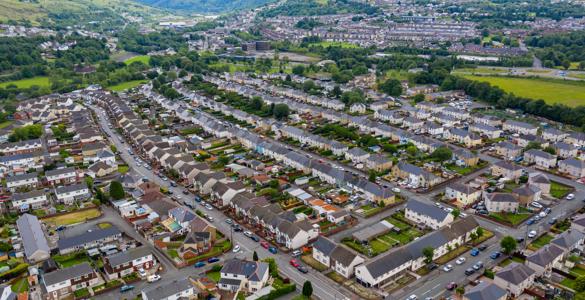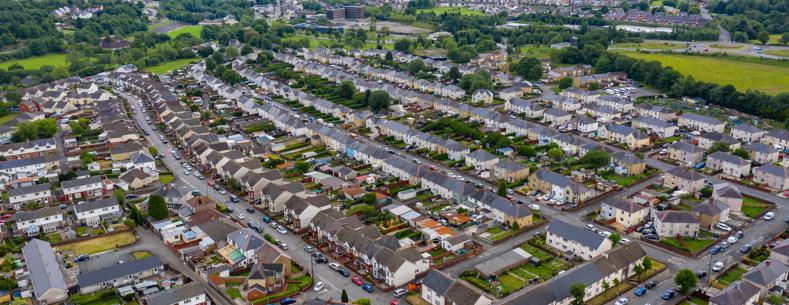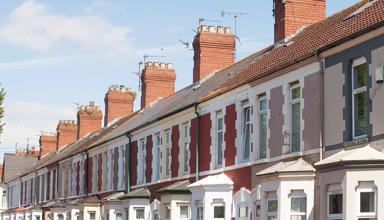It’s crucial for effective policymaking. It supports good decisions, and according to Sherlock Holmes it’s a capital mistake to theorise without it.
But a running theme in housing-related Committee inquiries is that in comparison with other UK nations, Wales lacks data.
In recent inquiries on the private rented sector and social housing supply, a common complaint from stakeholders is that a lack of data is making it harder to understand the nature of people’s housing problems. Data gaps are said to be clouding the impact of Welsh Government policies, obscuring what’s worked and what hasn’t.
This article summarises the debate on housing data and highlights some questions that the available data can’t currently answer. It looks at what stakeholders are calling for, and what the Welsh Government says it is doing, to improve the data picture.
Data – the perennial issue
”Whenever we come before this committee, we always get to data at the end, don’t we, or the lack of it, or the opaque nature of the data that we have,” Matt Dicks, Director of the Chartered Institute of Housing Cymru, told the Local Government and Housing Committee in March 2024.
Gaps highlighted by stakeholders include the number of accessible homes; the affordability of private rents.; the demographics of social tenants; and the proportion of social housing that’s allocated to homeless households.
Calls to improve data have coalesced into a campaign for a Welsh housing survey led by the National Residential Landlords Association (NRLA), which looks to the English Housing Survey as a model.
The English Housing Survey has been running annually since 1967. It includes two components: a household interview, and a physical inspection of a sub-sample of properties. The data show:
- the profile of households and dwellings;
- housing costs and affordability;
- people’s housing histories and future expectations;
- the condition and energy efficiency of homes; and
- measures of wellbeing and life satisfaction.
The last Welsh housing conditions survey was carried out in 2017-18. The National Survey for Wales also collects some housing data although no headline results are published.
The Local Government and Housing Committee called for a Welsh housing survey in July 2023. The Welsh Government said it was looking at a business case but in April 2024 the former Cabinet Secretary for Housing, Local Government and Planning Julie James MS said that an annual conditions survey would be too expensive.
Some unanswered questions
Much has changed since the last national estimates of additional housing need were calculated pre-pandemic, based on 2019 data. Temporary accommodation use has more than doubled. Also, the estimates of additional housing need don’t include households in unsuitable accommodation, meaning that they’re likely to undercount unmet need.
Local Housing Market Assessments (LHMAs) are vital for determining local housing requirements, forming a key part of the evidence base for Development Plans. Local authorities returned their latest LHMAs by March 2024. They include categories of unmet need that aren’t in the national estimates, such as overcrowded households, rough sleeping and hidden homelessness. However, some stakeholders have warned that the LHMAs may still underestimate need. The Wales-wide total is unknown.
The landlord licensing scheme, Rent Smart Wales, has enhanced the PRS data picture in many ways. However, it has proven less reliable at tracking when landlords leave the sector. Under licence requirements, landlords should notify Rent Smart Wales when they stop being landlords. However many don’t do this, so the figures play catch-up every five years with the relicensing cycle.
”That data is skewing the honest conversations that need to be had around the PRS in Wales,“ said Steve Bletsoe of the NRLA.
The former Cabinet Secretary acknowledged that figures dipped around November 2021 with the relicensing cycle, but said they have ”grown very steadily ever since”.
Before the pandemic local authorities returned quarterly homelessness data via the ‘WHO12’ form. This stopped in 2019-20 and was replaced by a monthly collection of a smaller range of data.
One aspect of the WHO12 that’s no longer collected is reasons why households become homeless or are threatened with homelessness. This information can inform how to prevent homelessness happening.
The Welsh Government has recently consulted on an Ending Homelessness Outcomes Framework which proposes 44 data indicators to measure progress. Many of these indicators would involve the collection of data that are not currently available. The Welsh Government said this will ”take significant steps towards measuring progress towards our long term ambition to end homelessness“. A newly-established working group is exploring the possibility of collecting individual level data, as already happens in England and Scotland.
Another statistical collection suspended since the pandemic is the count of people sleeping rough. Between 2015 and 2019 this was done via an annual two-week information-gathering exercise coupled with a one-night count during which local authorities would physically survey their area.
The count was suspended in 2020 and replaced by monthly estimates. In April 2024 the Welsh Government consulted on stopping the annual count for good, reasoning that the count risked missing some people.
Estimates are based on local intelligence. Homelessness charity The Wallich has warned that local authorities use different estimating methods and called for greater consistency ”so that we can be confident that some areas are not under-reporting the scale of the challenge”.
The Welsh Government said the longer-term intention is to move to individual-level homelessness data collection, although this won’t initially include rough sleeping data.
Filling gaps
Alongside the work to improve homelessness data, the Welsh Government is taking other steps to fill gaps. The recent Green Paper on Housing Adequacy and Fair Rents included a call for evidence since, as the former Cabinet Secretary said, ”We know that we have lots of data and evidence gaps.“ A White Paper is expected later this year which may include proposals around data.
The call for a Welsh housing survey is likely to keep coming up. While it is important not to collect data for data’s sake, there are arguments that investing in data saves public money.
But while finances remain tight, will the Welsh Government see housing data as a luxury or an essential?
Article by Jennie Bibbings, Senedd Research, Welsh Parliament
Since this article was published the Welsh Government has published data for 2023-24 on reasons why homeless households lost their last settled home. Data can be found here.






